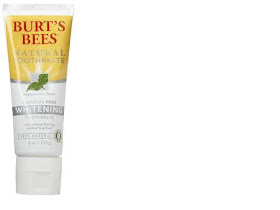ChronologyAFRICAN AMERICANS IN DENTAL HISTORY -- REPRESENTATIVE CHRONOLOGY
|
This blog is dedicated to dental health and how it relates to a person's overall health. I will post articles and subjects relevant to today's most forward thinking on dental health, beauty, and comfort. Your participation and comemnts are welcomed in order to enrich the experience. Dr. Neal
Tuesday, February 22, 2011
In Honor of Black History Month
Monday, February 21, 2011
Fluoride free toothpaste
Why do we put fluoride in toothpaste?
Fluoride has shown effectiveness in reducing tooth decay in many studies.
Fluoride also kills some bacteria.
Fluoride reduces tooth sensitivity.
Why Fluoride Free?
Fluoride is a poison at a high enough dose.
Fluoride does accumulate in the bones.
Fluoride, in excess, can lad to dental fluorosis (pitting and discoloration) of the teeth.
Some studies indicate that fluoride has no effect on tooth decay.
You have the right to choose.
Though I still believe fluoride benefits outweigh its risks in the right dose and when used properly, I feel people who think otherwise should have a choice.
Many health conscious people prefer to have fluoride free toothpaste.
Who are the major toothpaste manufacturers?
The major players in the toothpaste market are Crest, Colgate, Aquafresh, and Sensodyne. None had adult toothpaste without fluoride. These toothpastes took up 80% of the space with some having over 20 different varieties.
What fluoride free toothpaste choices are out there?
I recently set out to see what was available locally for those individuals. Surprising results revealed that most of the major chain stores do not offer much of a selection for people wanting fluoride free toothpaste. In fact the local Jewel, Wal-Mart, Walgreen’s, and CVS Pharmacy stores only had a children's fluoride free toothpaste made by OraJel, (and one had a Colgate fluoride free children's toothpaste). So I tried a few more stores to see what they had. Happily, I found fluoride free adult toothpaste at Meijer, Woodman’s, and Trader Joe’s. Woodmans offered the most variety with 4 different ones.
By far the best variety was to be found at Whole Foods followed by your local health food stores. The largest variety of all will be the internet.
What else is in that tube?
My concerns about some of the fluoride free toothpastes available are similar to my concerns with the Major players like Crest. They put a lot of stuff in many of these tubes that you cannot be sure of their purity, and safety. It is easy to make claims that this ingredient does something or other. It is another thing to have proof that it does not do something else, or cause harm over time.
Though you are not supposed to swallow toothpaste, it is impossible to not swallow some.
The basics
What is the purpose of tooth brushing?
Clean your teeth and gums.
Dry brushing will do that if you take the time and do it properly.
What can toothpaste do?
Freshen your breath with mint flavorings and baking soda.
Strengthen your teeth with calcium and phosphorus.
Prevent cavities with fluoride and xylitol.
Kill germs with fluoride and a multitude of herbs and other chemicals.
Whiten your teeth, with abrasives and enzymes.
Reduce sensitivity with potassium nitrate, or strontium chloride.
Taste good with foaming agents and flavorings.
Help clean with sodium laurel sulfate and similar compounds.
Reduce gingivitis with chemicals and herbs.
Though many of the claims may be somewhat true, many may be hard to prove. In the case of “natural”, “holistic”, or “organic realms”, claims could be anecdotal at best.
The product now needs other chemicals, colorings, and additives to stabilize it give it a nice look, longer shelf life, and consistency.
So now you have your toothpaste, a literal chemistry lab that you put in your mouth every day. Take out the fluoride and you can still have a chemistry lab without fluoride. Just because it says "all natural" or "organic" does not mean that it is safe in my opinion.
What other problems could toothpaste cause?
It can cause you to shorten the time you brush. The flavoring and bubbles can make you think you are done sooner as your mouth feels fresh and minty.
How much toothpaste should you use?
A pea sized amount, and the younger or smaller the child the less you should use. In fact, if you are concerned, don’t use any toothpaste at all.
What fluoride free toothpastes would I recommend?
Burt’ Bees natural toothpaste Whitening…SLS* free and fluoride free.
SLS is Sodium Laurel Sulfate ( and similar compounds) that are foaming agents and tend to lead to canker sores for some people.
If you cannot locate these, try to choose one that has the least ingredients.
Make your own.
If you want safe and free of additives, make your own.
Here is a simple recipe.
3 scoops of stevia (undiluted)
3 teaspoons of xylitol
1 teaspoon of baking soda
3 drops of Peppermint oil
Stir up and dip a moist brush in it and brush for 2 minutes adding more if needed.
It tastes good, will reduce breath odors, kill germs, and prevent cavities. if you want to do some whitening also rinse with 1 part hydrogen peroxide to 3 parts water for 1 minute twice a day.
If you want it to be more like a gel, mix in some glycerin.
You can vary the ingredients to your particular taste and substitute Spearmint oil for Peppermint oil, or use both.
Spit it out when done.
If you have issues with your blood pressure, you can skip the baking soda, and you will need less to no stevia to counter the saltiness.
I welcome your comments.



